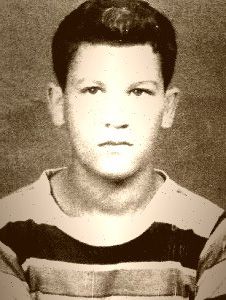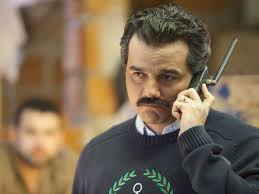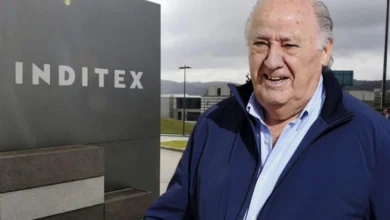Saint or Sinner: The Mysterious Life of Pablo Escobar

Pablo Escobar: From the Slums to the Throne of Crime — A Ruthless Rags-to-Riches Tale
Pablo Emilio Escobar Gaviria wasn’t just a criminal — he was a living contradiction. A billionaire drug kingpin who built hospitals for the poor. A devoted father who bombed planes. A man who once burned $2 million to keep his daughter warm. His life is the ultimate rags-to-riches story, drenched in blood, billions, and a bizarre kind of twisted legacy.
Humble Beginnings: The Seeds of Ambition

Born on December 1, 1949, in Rionegro, Antioquia, Colombia, Escobar came from poverty. His father was a hardworking farmer, and his mother a schoolteacher — neither of whom could shield him from the harsh realities of a poor childhood. He grew up in Medellín, a city that would later become his empire and battleground.
As a teenager, Escobar was already hustling. He started with petty crimes — stealing tombstones, forging documents, and selling contraband cigarettes. He wasn’t just a thug; he was strategic, ruthless, and obsessed with power. By his early 20s, he declared, “I’m going to be a millionaire by the time I’m 22.”
READ ALSO: Griselda Blanco The Cocaine Godmothers Ruthless Rise and Bloody Reign
Building the Cocaine Empire: The Rise of the Medellín Cartel

In the 1970s, cocaine was exploding in popularity in the United States. Escobar saw an opportunity, and he didn’t hesitate. He partnered with powerful drug producers in Peru and Bolivia, smuggling the powder into the U.S. using everything from private planes to submarines.
By the early 1980s, Escobar had founded the Medellín Cartel, which quickly became the most powerful criminal organization in the world. At its peak, the cartel controlled 80% of the global cocaine trade. Escobar alone was smuggling over 15 tons of cocaine per day into the U.S.
With an estimated net worth of $30 billion, Escobar was one of the richest men on Earth. He was so rich he couldn’t launder the money fast enough. Bundles of cash were hidden in walls, buried underground, or stored in warehouses. Rats reportedly ate nearly $1 billion a year, and Escobar didn’t even flinch.
“Plata o Plomo”: A Rule by Fear and Force

Escobar’s method of control was simple: Plata o Plomo — silver or lead. Accept a bribe or take a bullet. Judges, police officers, politicians — everyone had a choice. Those who refused his money often found themselves or their families dead.
In 1989, when a presidential candidate threatened his influence, Escobar did the unthinkable. He bombed Avianca Flight 203, killing 107 people, just to eliminate one man. It sent a chilling message across the nation and the world: Escobar would stop at nothing.
The People’s Robin Hood?
Despite his brutality, Escobar cultivated an image of a savior among Colombia’s poor. He built housing for the homeless, funded football fields, constructed hospitals, and handed out food and cash in slums. Entire neighborhoods in Medellín idolized him. He was nicknamed “El Patrón” — The Boss — and seen by some as Colombia’s Robin Hood.
But this generosity came at a cost. His philanthropy was also a shield — buying loyalty, silence, and protection from the very communities authorities needed help from.
The Self-Built Prison: La Catedral

In 1991, in a bizarre deal with the Colombian government, Escobar agreed to surrender if he could build his own prison. The result was La Catedral, a lavish fortress equipped with a jacuzzi, billiards room, bar, soccer field, and even a waterfall.
He ran his drug empire from inside, hosted guests, and lived more like a king than a prisoner. When the government decided to relocate him to a real prison, Escobar simply escaped, proving once again that no one could cage him.
Father First: The Day He Burned $2 Million

One of the most jaw-dropping stories from his life came during his final days on the run. In a freezing mountain hideout, Escobar’s daughter, Manuela, was suffering from the cold. With no heater or electricity, Pablo made a decision only he could afford — he burned $2 million in cash to keep her warm and cook food.
For all his cruelty, Escobar was a loving father, deeply protective of his children.
The Final Chase: One Call Too Many
As global pressure mounted, the U.S. joined forces with Colombia to bring Escobar down. Special task forces, informants, and rival cartels all hunted him. He was constantly moving, paranoid, and surrounded by bodyguards.
His fatal mistake? A simple phone call.
In December 1993, Escobar called his son from a secret hideout. Authorities were monitoring phone lines and instantly triangulated his location. On December 2, 1993, just one day after his 44th birthday, Escobar was shot and killed on a Medellín rooftop.
Some say he was gunned down by the police. Others claim he shot himself to avoid capture. The truth remains unclear.
A Legacy of Chaos and Contradiction
Pablo Escobar’s story is one of contradictions. He was both hero and villain, protector and destroyer, father and fugitive. He brought unimaginable pain to millions but also inspired blind loyalty from thousands.
His impact on Colombia was massive — he turned Medellín into a war zone, forced the government to rewrite laws, and made the world see how far greed and power could go when mixed with fear.
Even in death, Escobar’s story lives on — in books, documentaries, TV shows like Narcos, and even in the neighborhoods that still remember him as a legend.



